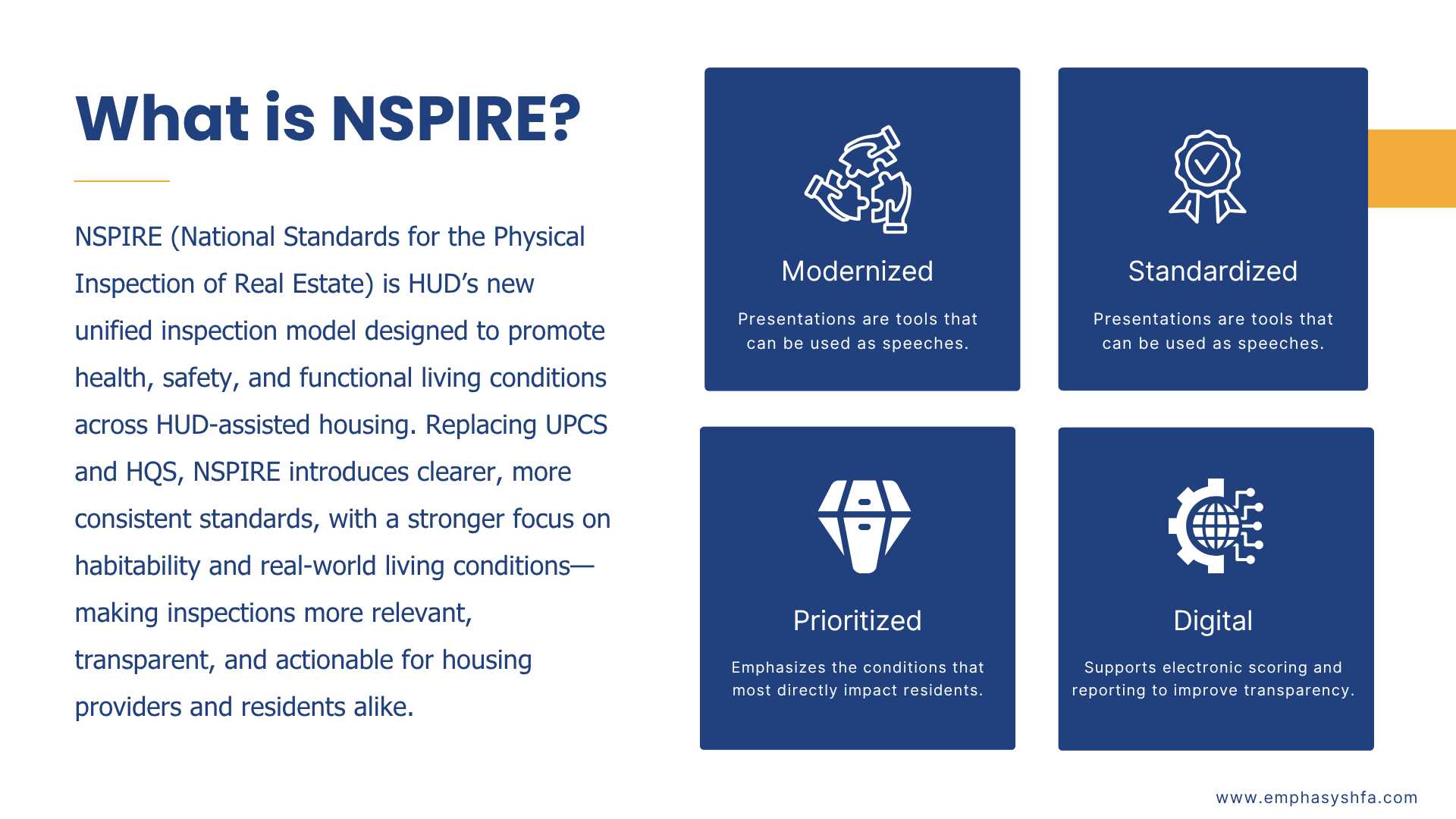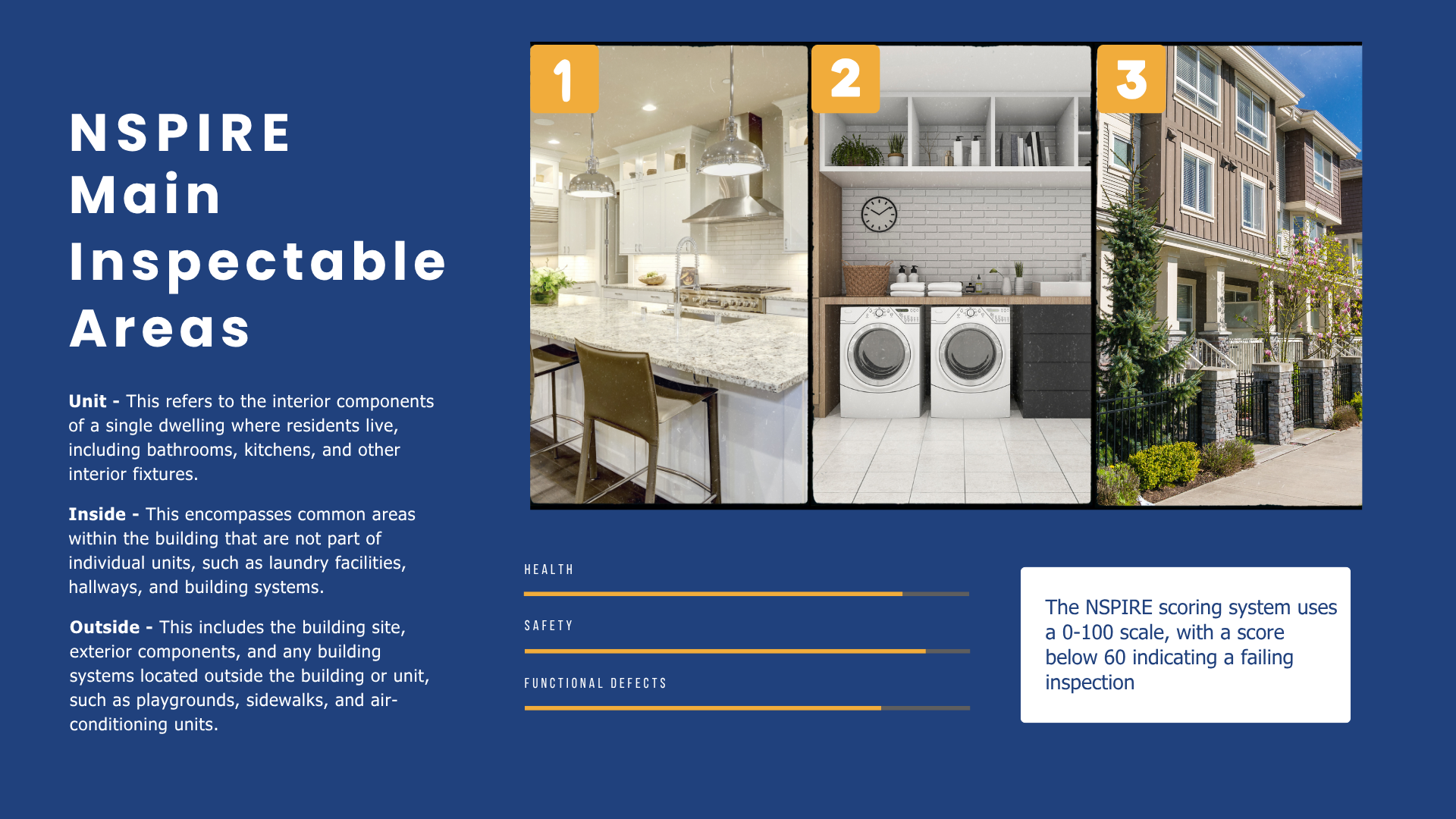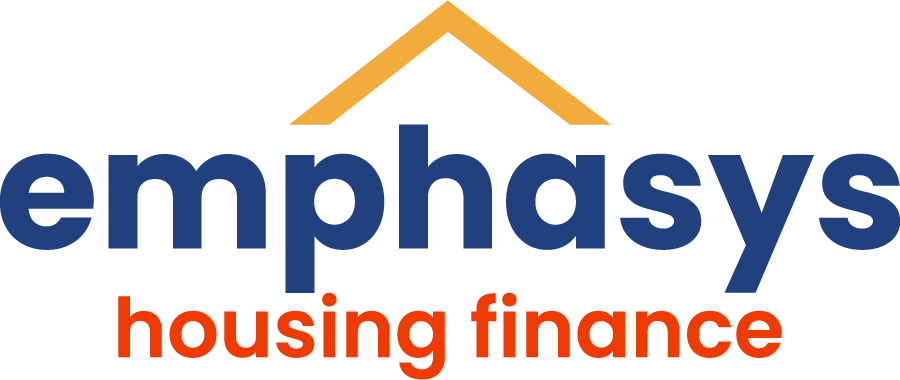NSPIRE Audit Requirements, What Agencies Are Still Navigating

As NSPIRE audit requirements mature from rollout to reality, Housing Finance Agencies are feeling the shift. Compliance expectations are no longer focused solely on the physical condition of units—they now demand tight operational execution, especially when it comes to tenant file documentation.
At Emphasys, we recently hosted a Multi-Family webinar to explore what NSPIRE means for our clients in practice, not just on paper. For those who couldn’t attend, this post continues that conversation with insights from our own Client Services team. These are the people who work directly with agencies to troubleshoot, clarify, and support implementation.
Since NSPIRE became the new “norm” we’re hearing questions like: What qualifies as sufficient documentation? How do we track deficiencies across departments? Who “owns” follow-up tasks, and how do we prove it?
The short answers: Consistency, visibility, and traceability.
What NSPIRE Audits Are Actually Asking for
Tenant file audits are now a parallel track of compliance as significant as the physical inspection itself. Under the previous UPCS (Uniform Physical Condition Standards), the focus was largely on property condition—with file documentation viewed as an adjacent requirement, not an integrated one. NSPIRE changed that. Implemented to promote a more holistic, health-and-safety-driven model of housing quality, NSPIRE ties property deficiencies directly to the operational processes that address them. This means the tenant file is no longer just a back-office record—it’s evidence of performance.
Auditors want:
- Evidence that identified deficiencies were corrected within required timeframes
- A clear, traceable link between physical findings and tenant-level documentation
- Communication logs with residents related to access and remediation.
- Proof of follow-up—not just that the work was done, but that it was confirmed, tracked, and retained
In other words, it’s not enough to say the issue was resolved. Agencies must show when, how, by whom, and that all required follow-through occurred—and they must do it in a way that’s easily accessible and audit-ready. As one HUD regional inspector recently noted, “If it’s not in the file, it didn’t happen. Documentation isn’t just paperwork—it’s the official version of events.”


Recognizing these new challenges early, Emphasys was the first software provider to adapt its Multi-Family Suite to support NSPIRE standards. Our team didn’t wait for consensus—we studied the regulations, listened to clients in the field, and built functionality that reflects the realities of agency operations. Enhancements were grounded in collaboration, urgency, and a shared understanding that tenant file audits were about to get a lot more demanding.
How Agencies Are Closing the Gaps with Tools That Work
Agencies seeing the most success aren’t just trying to keep up with NSPIRE. They’re stepping back and redesigning the documentation process to reflect how the work actually flows. And they’re choosing systems that reinforce those efforts every step of the way.
The Emphasys Multi-Family Suite is built to do just that:
- Inspection results automatically trigger follow-up tasks with deadlines and assigned owners, so nothing slips through
- Unit inspections, work orders, and tenant files are linked in one platform, creating a single source of truth
- Audit folder templates and document upload prompts create consistency across programs and properties
- Role-based workflows and real-time reporting surface issues before they become findings
The result is a smoother operation—where teams spend less time chasing files and more time ensuring accuracy.
Take one example: A mid-sized agency in the Midwest used to manage inspections and tenant documentation across three systems and two departments. Preparing for audits meant days of backtracking, cross-checking, and hoping nothing fell through. After implementing the Multi-Family Suite’s audit tracking and inspection workflows, they reduced audit prep time by over 40%. More importantly, they now have a standard process that anyone on the team can follow—even when roles shift or staff is stretched thin.
We’re not replacing expertise. We’re protecting it—with systems that ensure critical information doesn’t fall through the cracks.
Building Systems That Serve
Under NSPIRE, passing an audit isn’t the goal—being ready for one at any time is. That means building systems and habits that reinforce compliance every day, not just at audit time.
The agencies that treat tenant file management as a year-round practice—not a one-time event—are the ones building resilience, not just reacting to regulation.
NSPIRE raised expectations, but agencies don’t have to meet them alone. When systems are aligned with the work—as it actually happens—compliance becomes less about catching up, and more about staying ready.
Explore More
We sat down with our Client Services team to talk through the tenant file audit challenges agencies are navigating under NSPIRE—and how they’re adapting in the field. Read the interview.
If your agency is ready to explore how the Emphasys Multi-Family Suite supports audit readiness from day one, contact us at hfa-sales@emphasys-software.com.
